Key takeaways:
- Integrating renewable energy, especially solar, significantly reduces electricity bills and fosters community engagement and awareness.
- Assessing energy needs and local resources is crucial for selecting suitable renewable solutions, making the transition manageable and empowering.
- Future trends include decentralized energy systems, smart technology integration, and advancements in battery storage, enhancing sustainability and energy independence.

Understanding Renewable Energy Basics
Understanding renewable energy begins with recognizing its core types: solar, wind, hydroelectric, geothermal, and biomass. Each of these sources plays a vital role in mitigating climate change and decreasing our reliance on fossil fuels. I remember the first time I stood beneath a field of solar panels; it felt like witnessing a silent revolution in energy.
What really struck me was the sheer potential of solar energy. With sunlight hitting Earth in abundance every day, why don’t we harness every ray? Investing in solar panels for my home felt like taking a step toward a sustainable future, both personally and globally. I’ll never forget the moment I flipped the switch to my own clean energy source—it was empowering.
Engaging with renewable energy isn’t just about the technology; it’s about vision and community. Have you ever considered how wind farms could transform a rural landscape? The sight of those towering turbines dancing in the breeze ignites a sense of hope in me. It’s inspiring to see how communities can rally around these projects, turning idle lands into sources of clean power for all.

Benefits of Integrating Renewable Energy
Integrating renewable energy yields a multitude of benefits that reach far beyond mere environmental impact. For me, the most immediate advantage has been the reduction in my electricity bill. After installing solar panels, I was pleasantly surprised to see how much I saved in just the first few months. Beyond personal financial savings, adopting renewable energy creates a ripple effect within the community. I often share my experience with neighbors, and many are excited to learn how they can benefit as well.
Here are some of the key benefits of integrating renewable energy:
- Cost Savings: Reduced utility bills through energy efficiency and potential government incentives.
- Energy Independence: Less reliance on foreign fossil fuels boosts national security.
- Environmental Impact: Significant reduction in greenhouse gas emissions helps combat climate change.
- Job Creation: Increased demand for renewable energy technologies creates new job opportunities in manufacturing and installation.
- Community Revitalization: Local energy projects can stimulate economic growth and enhance community resilience.
Making the switch felt like joining a movement, one that not only contributes to preserving our planet but also fosters a sense of connection with those around me. I’ve found that discussing renewable energy solutions often leads to deeper conversations about the kind of legacy we want to leave for future generations.

Assessing Energy Needs and Resources
Assessing energy needs and resources is a fundamental step in my journey towards integrating renewable energy solutions. Before I made any decisions, I spent time really evaluating my household’s energy consumption. I remember poring over my electricity bills, noting peak usage times and understanding which appliances consumed the most energy. This process not only highlighted where I could improve efficiency but also allowed me to make informed decisions about which renewable energy sources would meet my specific needs and lifestyle.
I also considered the natural resources available in my area. Each region has its unique strengths—be it abundant sunlight or consistent winds. For instance, living in a sunny region meant that solar power was an obvious choice for me, while friends in windier areas found success with small wind turbines. By assessing local climate conditions, I found the most effective solution for my energy goals. It was like solving a puzzle, where all the pieces came together to reveal a clearer picture of sustainable energy possibilities.
This assessment isn’t just about numbers; it’s a pathway to empowerment. Having a clear understanding of energy needs and local resources makes the transition to renewable sources less daunting. It’s exhilarating to think that with each solar panel I added, I was directly influencing my energy independence. How often do we get that chance to take control over our energy future? Ultimately, the realization of how my choices affected not just my wallet, but our planet, spurred me to dive even deeper into renewable solutions.
| Aspect | Application |
|---|---|
| Energy Assessment | Reviewing monthly utility bills, identifying peak usage, and evaluating energy-hungry appliances. |
| Resource Evaluation | Considering local climate, like sunlight or wind availability, to choose suitable renewable sources. |

Choosing the Right Renewable Solutions
When it comes to selecting renewable energy solutions, it’s essential to align them with your personal needs and the specific characteristics of your location. I learned this firsthand as I researched various options, weighing the pros and cons of solar versus wind energy for my home. I remember standing in my backyard, soaking in the sun, and realizing that my sunny environment made solar panels the ideal choice. Have you ever thought about how your surroundings could dictate your energy solutions? It’s a game-changer.
The decision-making process also involves understanding your budget and any available incentives. I found myself combing through government programs that could lessen the financial burden of my installation costs. One day, as I glanced over the potential savings, I thought, “Can I afford not to do this?” Knowing that there were rebates available made the prospect not only feasible but incredibly exciting. Investing in renewable energy felt like finding a solution that was both financially and environmentally sound.
Finally, the emotional aspect of choosing renewable energy cannot be underestimated. It’s about envisioning a future where I contribute to a sustainable planet. When I made my final decision, it felt more than just practical; it felt like a personal mission. Sharing my journey with others, I realized that my choices could inspire them too. What if your decision could spark a conversation that leads to collective action in your community? That’s the potential impact we all can have when we choose the right renewable solutions for ourselves and the world around us.

Implementation Strategies for Integration
Implementing renewable energy solutions requires a strategic approach to ensure a smooth transition. I found that starting with a phased implementation plan worked wonders for me. Instead of going all-in at once, I tackled one project at a time, focusing on solar panels first. This made the process feel manageable and allowed me to monitor the impact each change had on my energy consumption. Have you ever tried breaking down a daunting task? It really can make a difference.
Another strategy I employed was leveraging local experts and resources. I remember reaching out to community members who had already made the switch. Their insights were invaluable; they shared practical advice about installation and maintenance that you wouldn’t find in brochures. By engaging with others who were on a similar path, I felt a sense of community that made the entire experience more enriching. What better way to learn than from those who have already ventured down the same road?
Finally, I prioritized ongoing education about renewable technologies. This isn’t a one-and-done situation. For me, I subscribed to newsletters and attended local seminars to stay updated on innovations and best practices. The more I learned, the more confident I became in fine-tuning my system. Have you ever considered how staying informed can empower your decisions? It’s a game-changer and has opened up new possibilities I hadn’t even considered at the start of my journey.

Measuring Success and Performance
Measuring the success of my renewable energy integration came down to both quantitative and qualitative metrics. I vividly remember tracking my energy bills over several months; seeing that first significant drop felt exhilarating. Did you ever notice how small victories can motivate you to push harder? Each dollar saved was a testament to my decision, and it fueled my commitment to deeper integration.
Another critical aspect was the performance assessment of my installed systems. I used monitoring apps to keep a close watch on my solar output, but it was the day I saw my panels generate more energy than they consumed that truly marked a turning point. It made me think: how often do we pause to celebrate our achievements, big or small? I encourage you to find those moments of joy in your journey; they can serve as powerful reminders of your commitment to sustainability.
Finally, I focused on the emotional and social impact of my renewable energy choices. I hosted a gathering to discuss my experience, and the conversations that unfolded were enlightening. People shared their thoughts, questions, and even their own plans for integrating renewable solutions. It’s fascinating to see how one person’s journey can spark a collective desire for change, isn’t it? Those discussions not only reinforced my commitment but also highlighted the community’s growing interest in renewable energy—a direct measure of success that transcends personal achievements.

Future Trends in Renewable Energy
Renewable energy is on the brink of some exciting trends that could reshape how we use power in the coming years. For instance, I’ve noticed a significant shift towards decentralized energy systems. People are increasingly interested in microgrids and community solar projects, which allow neighborhoods to generate and share energy locally. This not only fosters a greater sense of community but also helps reduce transmission losses. Have you ever thought about how empowering it is to produce your own energy right from your backyard?
Another trend capturing my attention is the rise of smart technology integration in renewable energy systems. The other day, I met someone who had installed an AI-powered energy management system that optimized her solar usage based on real-time weather data. She mentioned how it even adjusted her energy consumption patterns, maximizing efficiency and providing savings. Isn’t it fascinating how technology is making green energy even smarter? The possibilities for optimizing energy use are practically limitless.
Lastly, I believe the evolution of battery storage technology will be a game-changer for renewable energy. The advancements in energy storage allow us to utilize energy generated during sunny days more effectively at night. I once spoke with a friend whose family had invested in cutting-edge battery solutions; he told me it transformed their experience entirely, as they no longer relied solely on the grid. Could you imagine the freedom that would provide? As these technologies continue to develop, the pathway to a sustainable future becomes clearer and more accessible for all of us.
















